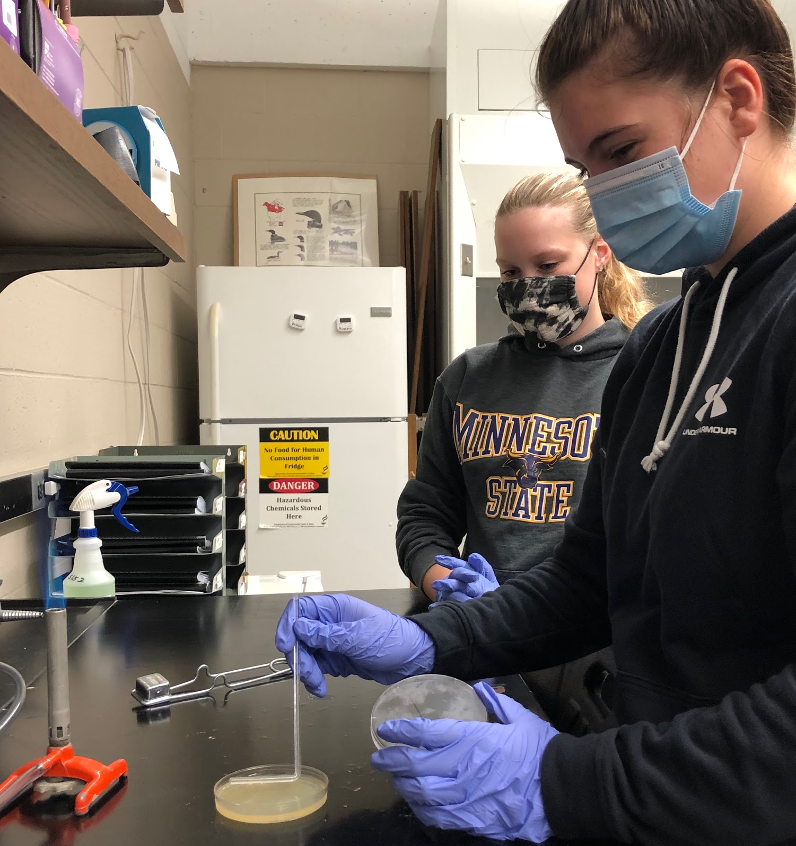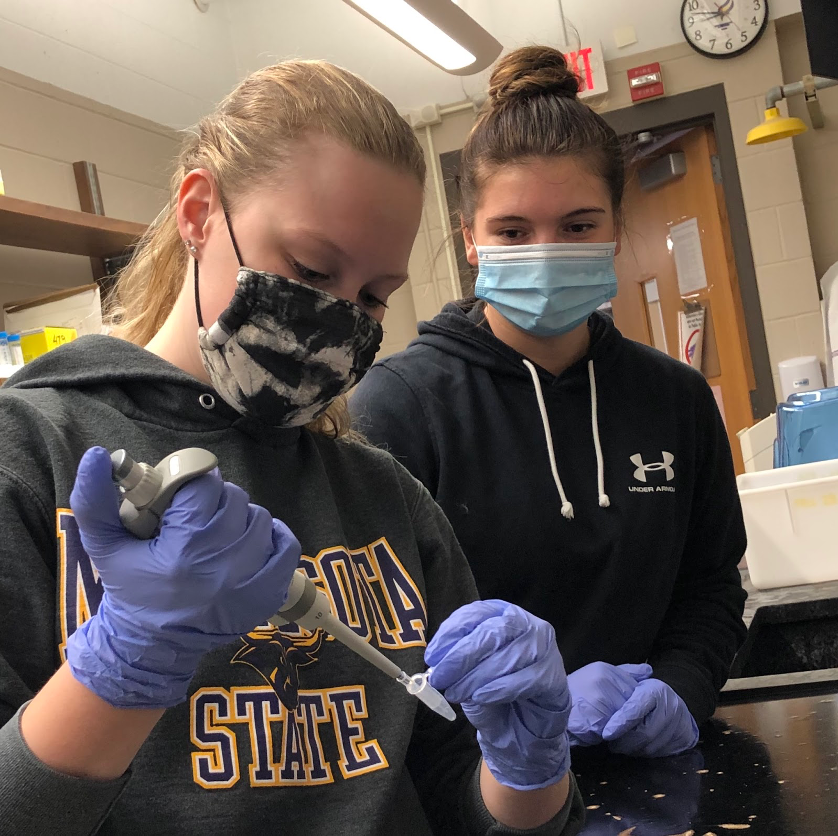By: Emilie Greene and Taylor Forstner
September 15, 2020
Introduction:
After six months of waiting to get back in the lab, we have finally started working in our research streams again. In late August we began refreshing our skills in the lab in preparation for continuing our projects from last year. For the past three weeks, we’ve been meeting in person for weekly lab meetings and have been slowly getting back into our routine. Now that we’ve practiced our skills, we are ready to work with our miRNA again, starting with bacterial transformation. Our plans for this semester include continuing our research while also following safety guidelines and ensuring we stay on-campus as long as possible.
Research:
During our first week back, our protocol consisted of practicing skills that we learned last year that are vital to conducting research. These skills included pipetting, making solutions, and making/running an agarose gel through gel electrophoresis. We were also able to practice streak plating E. coli, which is something we learned about online last spring, but were never able to actually perform in the lab.
After getting comfortable back in the lab, we could begin moving forward on our research. Last spring, before we transitioned online, we ended with purifying our PCR product containing our desired miRNA (hsa-miR-4297 & hsa-miR-4303). This left us with a concentrated solution of DNA that we will now use to insert into E. coli. Now we are practicing bacterial transformation with ampicillin resistance so we feel confident with this procedure before we start adding in our miRNA.
Bacterial transformation is the process of inserting a desired gene into a bacterial plasmid, which is a circular piece of DNA that often contains traits that help the bacteria’s survival. E. coli naturally aren’t resistant to ampicillin, which means they cannot survive when the antibiotic is present. Our goal is to insert a gene coding for ampicillin resistance into the E. coli, making it viable in an environment with the antibiotic. To start this process, we added the ampicillin resistance plasmid pcDNA3.1 to competent E. coli. These bacteria are fragile and susceptible to death if not kept in the right conditions, so throughout the entire protocol, we were very cautious to not let the E. coli come off the ice and not undergo any intense force such as stirring too hard. We let the E. coli and plasmid incubate on ice, and then heat shocked them using a 42°C water bath. Heating the E. coli rapidly causes their cell membranes to expand and loosen, facilitating the movement of the plasmid into the cells. After heat shocking, we returned the samples immediately back onto the ice to keep them from dying from the extreme heat, as well as sealing the membranes back up trapping the plasmids within the cells. We added a nutrient broth to promote the growth of the E. coli and then let them incubate to grow and express the pcDNA3.1 plasmid. After incubating, the cells will have had time to develop ampicillin resistance. We streaked for isolated colonies with the E. coli on agar plates containing ampicillin, so if the transformation was successful, we should see growth, as the cells are now able to survive around ampicillin.


Reflection:
After performing this protocol the first time, we saw no growth on the plates indicating the transformation was unsuccessful. Another group was able to see growth, meaning that our E. coli and pcDNA3.1 were viable and working. We attempted the protocol again, this time taking extra precaution and working alongside our mentors to ensure we were performing each step correctly. But again, we saw no growth on our ampicillin plates. Out of the three groups in this stream, one was able to successfully complete the transformation, but the other two saw no success both times the transformation was attempted. At this point, we are trying to troubleshoot what is going wrong within this protocol that is causing our attempts to fail; whether it’s an error of our own, or it’s related to our E. coli and pcDNA3.1 samples. Before we can move forward with our research, we want to successfully complete this practice of bacterial transformation, so we are ready for when we start using our miRNAs.

